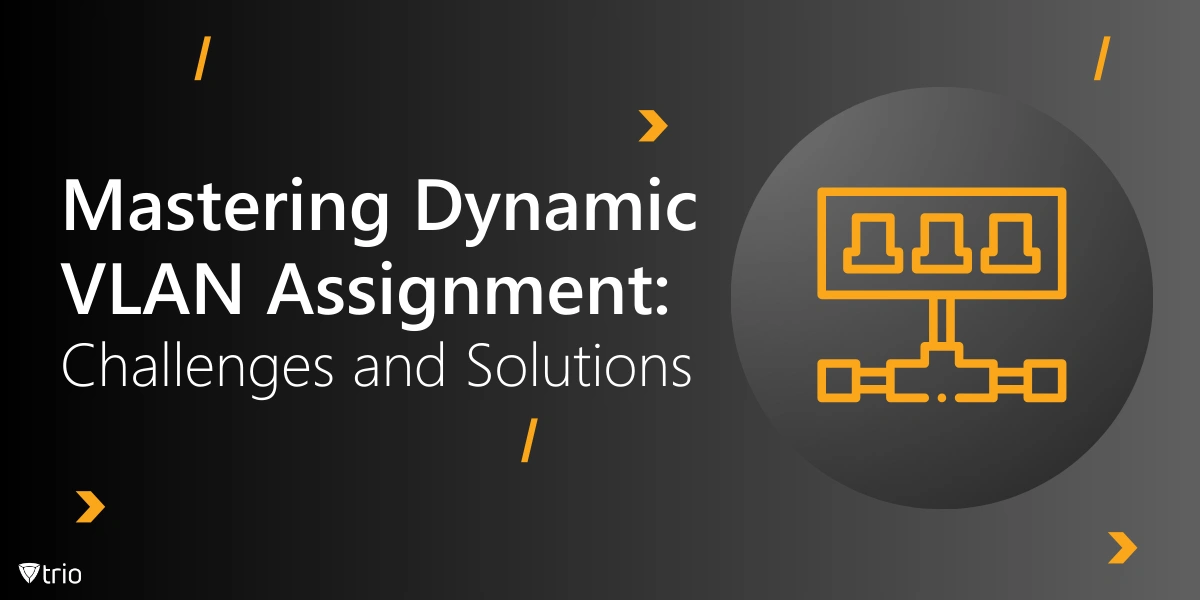As cyber threats continue to proliferate, IT administrators are constantly seeking innovative ways to fortify their network infrastructure. One such method that has gained significant traction in recent years is dynamic VLAN assignment. This sophisticated approach to network segmentation offers a robust solution for enhancing security and streamlining access control. However, like any advanced technology, it comes with its own set of challenges that need to be carefully navigated.
In this comprehensive guide, we will delve deep into the intricacies of dynamic VLAN assignment, exploring its benefits, implementation challenges, and potential solutions. We’ll also examine how this technology integrates with existing network infrastructure and discuss its role in modern cybersecurity strategies.
Understanding Dynamic VLAN Assignment Active Directory
Dynamic VLAN assignment, also known as VLAN steering or VLAN tagging, is a sophisticated network management technique that allows for the automatic allocation of users to specific virtual local area networks (VLANs) based on predefined criteria. This approach offers a more flexible and secure alternative to traditional static VLAN configurations, enabling network administrators to implement granular access control policies and enhance overall network security.
At its core, dynamic VLAN assignment leverages the power of network authentication protocols, such as RADIUS (Remote Authentication Dial-In User Service), to determine the appropriate VLAN for each user or device connecting to the network. This process typically involves the following steps:
User Authentication: When a user attempts to connect to the network, they are required to provide their credentials.
RADIUS Server Communication: The network access point forwards these credentials to a RADIUS server for verification.
Identity Verification: The RADIUS server communicates with the organization’s identity provider (IdP) to confirm the user’s identity and retrieve their access rights.
VLAN Assignment: Based on the user’s identity and associated permissions, the RADIUS server instructs the network access point to place the user in the appropriate VLAN.
Network Access: The user is granted access to network resources within their assigned VLAN, ensuring they can only reach the systems and data they are authorized to access.
This dynamic approach to VLAN management offers several advantages over static configurations:
Enhanced Security: By segmenting users into different VLANs based on their roles and access requirements, organizations can significantly reduce the risk of unauthorized access to sensitive resources.
Improved Flexibility: Dynamic VLAN assignment allows for seamless user mobility across different network access points while maintaining consistent access controls.
Simplified Administration: Centralized management of VLAN assignments reduces the administrative overhead associated with manually configuring network switches and access points.
Scalability: As organizations grow and evolve, dynamic VLAN assignment can easily accommodate changes in user roles and access requirements without requiring extensive network reconfiguration.
Understanding these fundamental concepts is crucial for IT professionals looking to implement or optimize dynamic VLAN assignment in their networks. In the following sections, we’ll explore the challenges associated with this technology and discuss strategies for overcoming them.

Strategies for Overcoming Implementation Challenges
While the challenges associated with implementing dynamic VLAN assignment can seem daunting, there are several strategies that organizations can employ to overcome these obstacles and successfully deploy this powerful network security technology. Let’s explore some effective approaches:
Thorough Planning and Assessment:
- Conduct a comprehensive network assessment to identify potential compatibility issues and infrastructure requirements.
- Develop a detailed implementation plan that outlines specific goals, timelines, and resource allocations.
- Involve key stakeholders from various departments to ensure all business needs are addressed in the VLAN design.
Phased Implementation:
- Start with a pilot project in a controlled environment to identify and resolve issues before full-scale deployment.
- Implement dynamic VLAN assignment in phases, beginning with less critical areas of the network and gradually expanding to more sensitive segments.
- Use the lessons learned from each phase to refine and improve the implementation process.
Leveraging Cloud-Based Solutions:
- Consider using cloud-based RADIUS-as-a-Service solutions to reduce the complexity of setting up and maintaining on-premises RADIUS servers.
- Cloud-based solutions often offer better scalability and built-in redundancy, addressing some of the performance and availability challenges.
Standardization and Documentation:
- Develop standardized procedures for configuring network devices, RADIUS servers, and VLANs to ensure consistency across the organization.
- Create comprehensive documentation of the dynamic VLAN infrastructure, including network diagrams, configuration details, and troubleshooting guides.
Training and Skill Development:
- Invest in training for IT staff to ensure they have the necessary skills to implement and manage dynamic VLAN assignment.
- Develop internal expertise by encouraging staff to obtain relevant certifications and attend industry conferences.
Automation and Orchestration:
- Implement automation tools to streamline the process of configuring and managing VLANs across multiple devices.
- Use orchestration platforms to coordinate changes across different components of the network infrastructure.
Performance Optimization:
- Implement caching mechanisms to reduce the load on RADIUS servers and improve authentication speed.
- Use load balancing and high-availability configurations for RADIUS servers to ensure optimal performance and reliability.
Enhanced Monitoring and Troubleshooting:
- Deploy network monitoring tools that provide visibility into VLAN assignments and authentication processes.
- Implement logging and analytics solutions to help identify and resolve issues quickly.
User Education and Support:
- Develop clear communication plans to inform users about changes in network access procedures.
- Provide user-friendly documentation and support resources to help users troubleshoot common issues.
Regular Review and Optimization:
- Conduct periodic reviews of VLAN policies and assignments to ensure they remain aligned with organizational needs.
- Continuously monitor and optimize the performance of the dynamic VLAN infrastructure.
Dynamic VLAN Assignment Examples
To better understand the practical applications and benefits of dynamic VLAN assignment, let’s examine some real-world scenarios where this technology has been successfully implemented:
Healthcare Organization: A large hospital network implemented dynamic VLAN assignment to enhance security and comply with HIPAA regulations. The system automatically assigns medical staff to VLANs with access to patient records, while administrative staff are placed in separate VLANs with limited access to sensitive data. Guest Wi-Fi users are assigned to an isolated VLAN with internet access only. This segmentation has significantly reduced the risk of unauthorized access to patient information and simplified compliance audits.
Educational Institution: A university deployed dynamic VLAN assignment to manage its diverse user base. Students are automatically assigned to VLANs based on their course of study, ensuring access to relevant departmental resources. Faculty and staff are placed in separate VLANs with appropriate access levels. During exam periods, the system can dynamically reassign students to restricted VLANs with limited internet access to prevent cheating.
Retail Chain: A multi-location retail company uses dynamic VLAN assignment to secure its point-of-sale (POS) systems. Store devices are automatically assigned to PCI-compliant VLANs, isolating payment card data from the rest of the network. Corporate users accessing the network remotely are assigned to VLANs based on their roles, ensuring they can only access authorized resources.
Manufacturing Facility: A smart factory implemented dynamic VLAN assignment to secure its industrial IoT devices. Production machines are automatically placed in isolated VLANs, protecting them from potential cyber threats. Engineers and maintenance staff are dynamically assigned to VLANs that grant access to specific machine groups based on their current tasks and authorizations.
Financial Services Firm: An investment bank uses dynamic VLAN assignment to enforce strict access controls. Traders are automatically assigned to VLANs with access to real-time market data and trading platforms, while analysts are placed in separate VLANs with access to research tools. Compliance officers are granted access to monitoring systems across multiple VLANs to oversee trading activities.
Conclusion
Dynamic VLAN assignment has emerged as a powerful tool for enhancing network security and access control in modern organizations. By automatically segmenting users and devices into appropriate network segments based on their identities and access rights, this technology offers significant advantages in terms of security, flexibility, and compliance.
However, implementing and maintaining a dynamic VLAN assignment infrastructure comes with its own set of challenges, including complexity, integration issues, and ongoing management requirements. By following best practices, leveraging cloud-based solutions, and integrating with other security technologies, organizations can overcome these obstacles and realize the full benefits of dynamic VLAN assignment.
As we look to the future, dynamic VLAN assignment is poised to evolve alongside emerging technologies such as AI, SDN, and 5G networks. These advancements promise to make network segmentation even more intelligent, adaptive, and seamlessly integrated with broader security and networking strategies.
For organizations seeking to enhance their network security posture, dynamic VLAN assignment remains a valuable and increasingly essential technology. By staying informed about best practices and future trends, IT professionals can ensure that their dynamic VLAN implementations continue to provide robust protection against evolving cyber threats.
See Trio in Action: Get Your Free Trial Now!
To further enhance your organization’s network security and device management capabilities, consider exploring Trio, a comprehensive mobile device management solution. Trio offers seamless integration with various network security technologies, including dynamic VLAN assignment, to provide a holistic approach to device and network management. With features designed to complement and enhance your existing security infrastructure, Trio can help streamline your IT operations while maintaining robust security measures.
We invite you to experience the benefits of Trio firsthand by trying our free demo. Discover how Trio can work alongside your dynamic VLAN assignment implementation to create a more secure, efficient, and manageable network environment for your organization.




